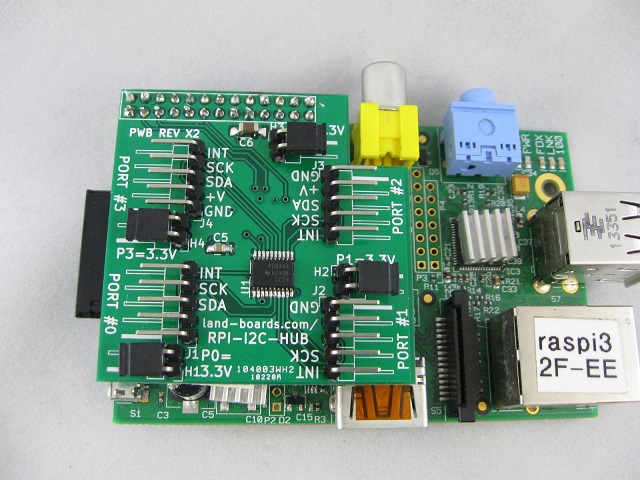Difference between revisions of "RPI-I2C-HUB"
Jump to navigation
Jump to search
Blwikiadmin (talk | contribs) |
Blwikiadmin (talk | contribs) |
||
| Line 1: | Line 1: | ||
[[File:tindie-mediums.png|link=https://www.tindie.com/products/land_boards/i2c-multiplexer-for-the-raspberry-pi-rpi-i2c-hub/]] | [[File:tindie-mediums.png|link=https://www.tindie.com/products/land_boards/i2c-multiplexer-for-the-raspberry-pi-rpi-i2c-hub/]] | ||
| + | |||
| + | == I2C Hub for the Raspberry Pi == | ||
<video type="youtube">R_YUetR83N4</video> | <video type="youtube">R_YUetR83N4</video> | ||
| − | |||
| − | |||
[[File:I2C-RPT-01_-6026_CCA-640px.jpg]] | [[File:I2C-RPT-01_-6026_CCA-640px.jpg]] | ||
Revision as of 15:34, 5 January 2020
Contents
I2C Hub for the Raspberry Pi
Features
- I2C Hub / Repeater / Replicator / Multiplexer / De-multiplexer
- PCA9544A IC
- Controlled via I2C
- Multiple part vendors
- Devices with the same address can be attached to different ports
- Host I2 port goes to Raspberry Pi I2C lines
- 3.3V host operation
- Four I2C slave ports
- I2C ports can use the Raspberry Pi or have their own power (power source select jumper)
- A Raspberry PI which runs 3.3V can control an I2C device which runs at 5V
- Voltage translation between the ports
- I2C ports can be 3.3V or 5V
- Fits in any Raspberry Pi model
- Cutout for Model B RCA video jack
- Interrupt controller on each channel and host 100KHz/400KHz operation
- On-board termination resistors

